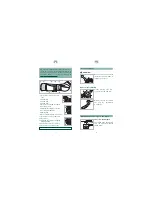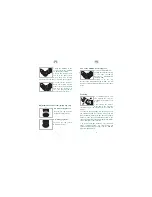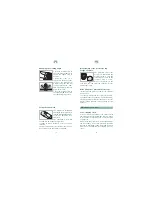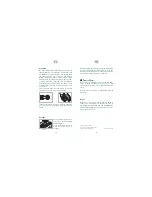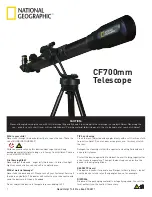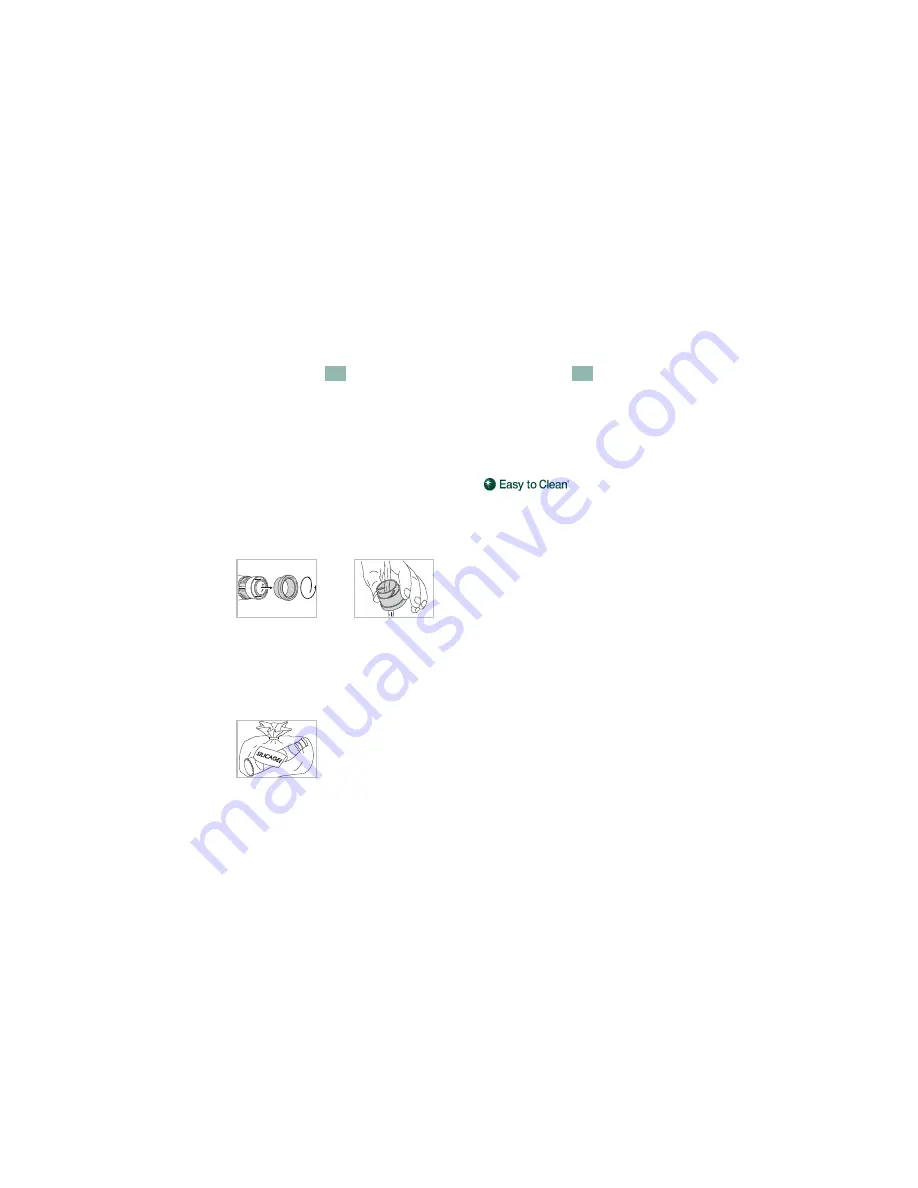
21
EN
20
EN
Cleaning
We have designed all elements and surfaces to
require little care. To ensure the long-lasting opti-
cal brilliance of your telescope, you should keep
the glass surfaces free of dirt, oil and grease.
When cleaning the lenses, first remove larger
particles with an optical lens brush. For the sub-
sequent thorough cleaning we recommend
breathing onto the lens surface to form a coat of
condensation and then cleaning it with a soft,
moist cloth.
The housing is best cleansed with a soft, moist
cloth (don’t use the lens-cleaning cloth).
In the event of hard-to-remove dirt (e.g. sand) the
eye cups can be unscrewed and cleaned very
easily.
Storage
You should keep your teles-
cope in a well-ventilated
and dark place.
If the instrument is wet, it
must be dried prior to
storage.
During longer stays in tropical regions with a high
degree of humidity the best place to store the
instrument in is an air-tight receptacle along with a
moisture-absorbing agent (e.g. silica gel).
Non-stick effect thanks to Easy to Clean. Ob-
vious cleaning advandage in the case of dirt
such as water marks, insect repellents and tree
resin.
Easy to Clean coating is not available in North
America.
Notice
Eyepieces of the Swarovski AT and ST 80 tele-
scopes fit mechanically into the bayonet lock of
the main bodies of the ATS and STS 65/80. But the
best optical imaging is ensured if eyepieces of the
new S series are used.
All data are typical values.
We reserve the right to make changes
regarding design and delivery. BA-660/1, 05/2007
Summary of Contents for ATS 65
Page 1: ......


